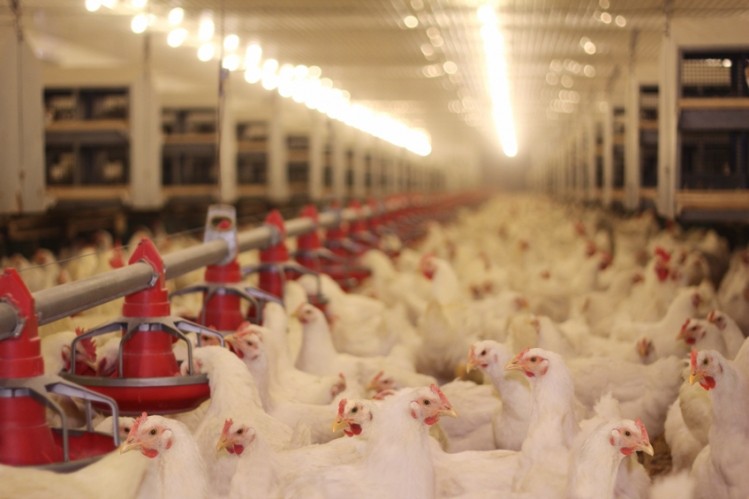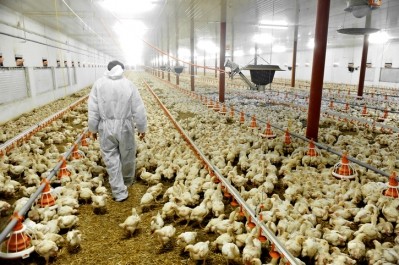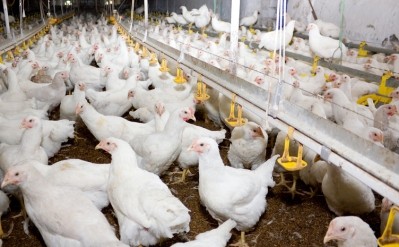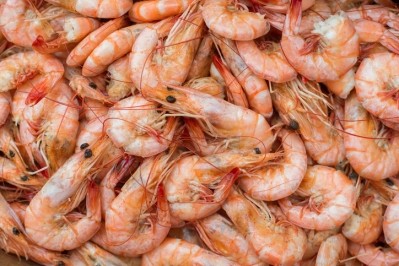Cellular pathways may hold key to greater feed efficiency in birds

We caught up with Walter Bottje, physiologist and faculty member at the University of Arkansas, to hear more about his many years of research into feed efficiency.
The overall goal of the team's line of inquiry is to provide more information on what may be informing feed efficiency, including data that could potentially be used by the breeders, he said.
In livestock production, the cost of feed represents 60–70% of the total cost of raising an animal to market weight. Thus, development of viable biomarkers for feed efficiency to assist in genetic selection of breeding stock remains an important goal in commercial breeding programs.
“The companies are looking for genetic markers in their selection program,” he said. “Mitochondria may or may not be in those markers.”
“What I’m trying to do, from an academic standpoint, is provide areas that could be fruitful,” said Bottje.
Having a better understanding of what happens at the cellular level may aid efforts to breed animals with improved feed efficiency, he said.
“The poultry industry is way ahead of the cattle and swine industries in feed efficiency, although swine are making rapid gains,” he said. “Where I see some of this being of greater value is to the other animal industries – they may be able to step up their work.”
Research overview
In an early phase of the exploration of feed efficiency, Bottje and a team of researchers examined the interaction of feed efficiency, mitochondrial function and biochemistry. That study was published in the journal Poultry Science.
The examination of the potential role that mitochondrial pathways play in feed efficiency grew out of a study into pulmonary hypertension, he said. During that project, a geneticist asked if mitochondrial function might have some part to play in the variation being found in feed efficiency in breeding stock.
Thirteen male chickens were assessed for feed efficiency and then samples of mitochondria were taken from the breast and leg muscle of birds displaying both high and low feed efficiency, the researchers said in the study.
Electron leak was found to be greater in birds with low feed efficiency, they said. Site-specific defects in electron transport were observed in muscle mitochondria from birds with low feed efficiency compared to those with high feed efficiency. These defects revealed that low feed efficiency mitochondria exerted greater oxidative stress in cells.
Efforts to inhibit electron transport increased electron leak in the breast mitochondria of birds that had low efficiency, but not in the more efficient ones, he said.
There was no change of basal electron leak for leg mitochondria, but H2O2 production increased in the leg muscle of low efficient birds, they said. The group found that the reduction in respiratory chain coupling in the muscle mitochondria of inefficient birds could result from reduced activity at different stages in the process and increased electron leak, they said. That information offers detail into some of the cellular function that could be linked to “phenotypic expression of feed efficiency.”
Feed efficiency and cellular pathways
Bottje and his team also looked at why mitochondrial function might be different in birds of the same type on the same diet.
“There have been studies that showed if you change a diet you can have big differences in feed efficiency,” he said. “These were all animals from the same pedigree line with the same feed – the phenotypes were a display of the genetic capabilities.”
The researchers examined different areas where mitochondrial function might be altering, he said. These included the potential for electron or proton “leak” within the cell.
Those areas were of interest because they found that birds with lower feed efficiency also had reduced electron movement down the respiratory chain, which can occur in two ways, he said. “The election leak was one and proton leak was the other,” he added.
Electrons travel through a transport chain in the process of generating ATP, said Bottje. “But along the way electrons can leak and they can cause radical production,” he added.
In examining the pathways in birds that were more efficient and less efficient, there was a difference in how electrons made that trip, he said. “We found that the birds that had poorer feed efficiency had greater (radical) production,” he added.
“These oxygen radicals can damage or oxidize everything in the cell,” he said. “The reason why animals, why we have antioxidants in the cell is to prevent this oxidation occurring.”
If the production of radicals within the cell is thought of as a process similar to rust, antioxidants in the cell act as the “Rustoleum,” he said. “We’re rusting away and these are trying to slow it down.”
Protein degradation
The research group also has started to examine gene expression in animals displaying differing feed efficiency abilities, said Bottje. Efforts to analyze the global expression data sets generated in that project are still in progress.
“It looks like the [birds] that are more efficient have a greater protein degradation process,” he said. “We’ve seen that there are a couple of pathways that are doing this.”
The finding is rather intriguing, because the expectation had been that the protein degradation would be lower in inefficient animals because they have an increased oxidation of protein, he said. “It is looking like the high feed efficient [birds] had greater expression of these pathways – maybe one of the ways the animals are more efficient is they’re more active in fixing damage before it gets pervasive,” he added.
The process may be akin to actively taking care of a new car, rather than putting in no maintenance effort, he said. “The car that is not taken in for regular maintenance doesn’t cost you a lot to run for a long time but after awhile it becomes less efficient and could stop working altogether. At this point, it costs a lot of money to get fixed. However, if the car is taken in for regular maintenance it remains efficient for a longer period of time while the other would get more inefficient over time,” he added.
“It appears that the high feed efficient [birds] in this model are fixing things; they’re degrading proteins more rapidly and appear to be making new proteins and don’t have any problems,” said Bottje. “There are tons of enzymes in the cell.”
“That was kind of a surprise to see,” he said. “It’s crazy, but the upside is the proteins would be functioning optimally in the cell that has to be tested more rigorously.”
Human health link
Additionally, the work may have some bearing on human health, said Bottje.
Much of the scientific literature looking at mitochondrial function looks at human-related diseases, he said. There are mitochondrial disruptions in diabetes, aging, cancer and Alzheimer’s.
“Mitochondrial malfunction and higher radical function are often playing a role in each of these diseases,” he said. “It’s easy to take this and say it could be important for these diseases.”
Dual research projects can use production species like poultry as models for human-related diseases he said.
Some of his more recent work also has started looking at obesity studies, said Bottje. This is currently being carried out in rats but will eventually look into obesity mechanisms in poultry.
Source:Frontiers in Physiology
DOI: https://doi.org/10.3389/fphys.2017.00306
Title: Proteogenomics Reveals Enriched Ribosome Assembly and Protein Translation in Pectoralis major of High Feed Efficiency Pedigree Broiler Males
Authors: W. Bottje et al
Source:Poultry Science
Title: Association of Mitochondrial Function with Feed Efficiency within a Single Genetic Line of Male Broilers
DOI: https://www.ncbi.nlm.nih.gov/pubmed/11989755
Authors: W. Bottje, Z. Tang, M. Iqbal, D. Cawthon, R. Okimoto, T. Wing, and M. Cooper















